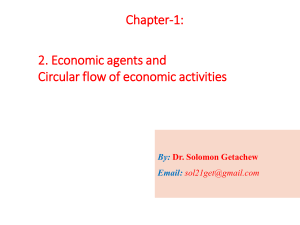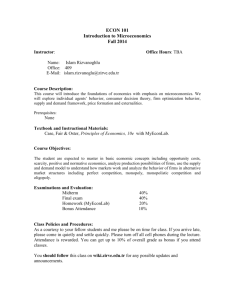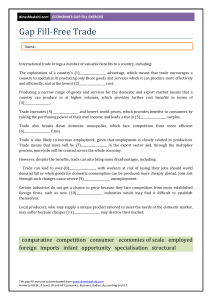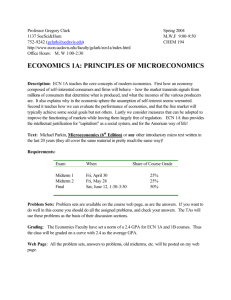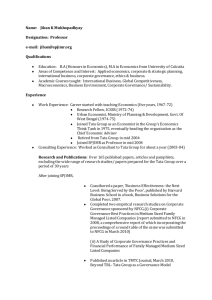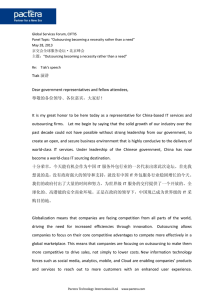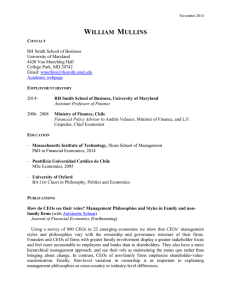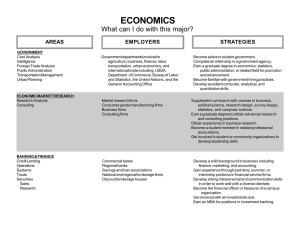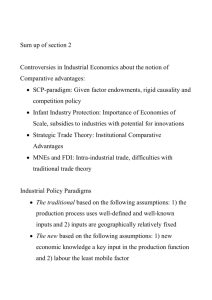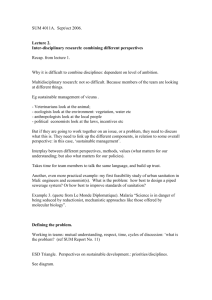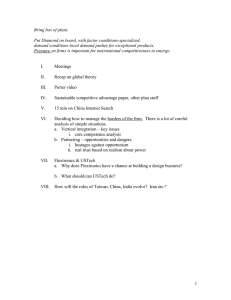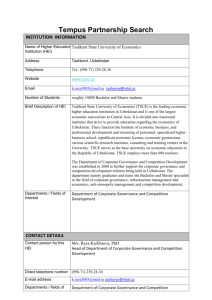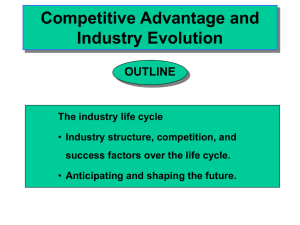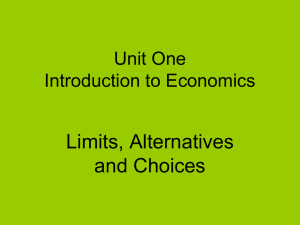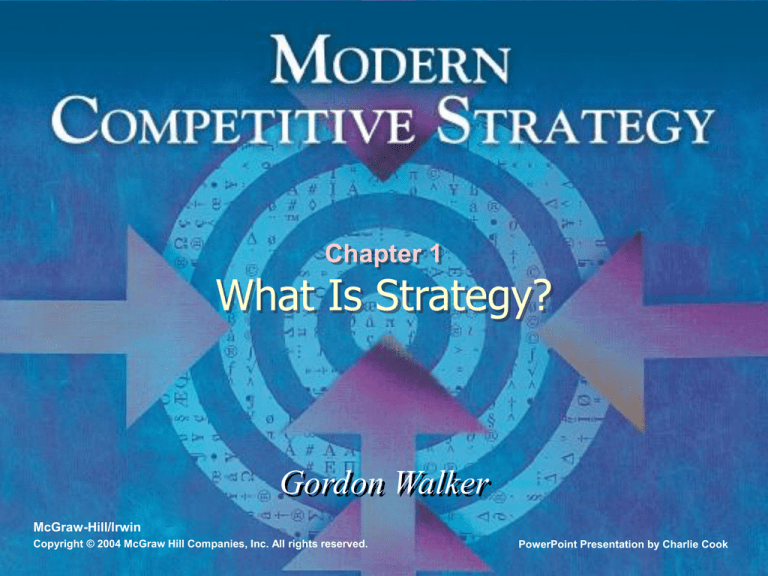
Chapter 1
What Is Strategy?
Gordon Walker
McGraw-Hill/Irwin
Copyright © 2004 McGraw Hill Companies, Inc. All rights reserved.
PowerPoint Presentation by Charlie Cook
Strategy
• Strategy
– The underlying variability among firms that leads
to a significant difference in their performance.
• Benefits of an effective strategy
– A source of economic gain
– A framework for resource allocation
– A guide for decisions regarding management and
organization
1–2
What Determines Firm Profitability?
• Macroeconomic factors
– Global market growth
• Industry factors
– Industry growth
– Competitive rivalry
– Entry barriers\New
entrants
– Technological innovation
• Market position
– Overall competitive
capability (strategy
implementation)
– Productivity through
efficient and effective
resource allocation
– Adaptability to changing
market conditions
– Customer tastes
1–3
Origins of Strategy
• The field of strategy emerged from:
–
–
–
–
–
–
Industrial economics
Case studies of exemplary companies
Business and industry history
Economic and organizational sociology
Strategic planning tools
Institutional economics
1–4
Contributions of Economic and
Organizational Sociology
• Contributions to strategy through analysis of:
–
–
–
–
–
Industry trends
Internal structures and process of firms
The development of organizational networks
Advantages of geographic location
Corporate governance
1–5
Institutional Economics and Strategy
• Institutional economics focuses on effective
governance of the firm’s boundaries through:
– Vertical integration
– Outsourcing
– Partnering
1–6
Strategy in Single Business Firms
• Single business strategy
– Focuses on achieving superior performance in
both domestic and global product markets.
» Maintaining a competitive position
» Establishing supplier relationships
» Discouraging new entrants
1–7
Strategy in Multibusiness Firms
• Multibusiness strategy
– Managing a portfolio of businesses such that their
performance increases as a result of being
managed together rather than separately.
» Providing resources—capital technology, materials,
and know how
» Furnishing specialized management skills
» Establishing interunit relationships
1–8
General Outline of the Book
Chapter 2:
Chapter 3:
Chapter 4:
Competitive Advantage
Industry Analysis
Competing over Time: Industry and Firm
Evolution
Chapter 5: Strategy Execution
Chapter 6: Vertical Integration and Outsourcing
Chapter 7: Partnering
Chapter 8: Competing in Global Markets
Chapter 9: New Business Development
Chapter 10: Managing a Mutltibusiness Firm
Chapter 11: Corporate Governance
Chapter 12: Strategic Planning and Decision Making
1–9

